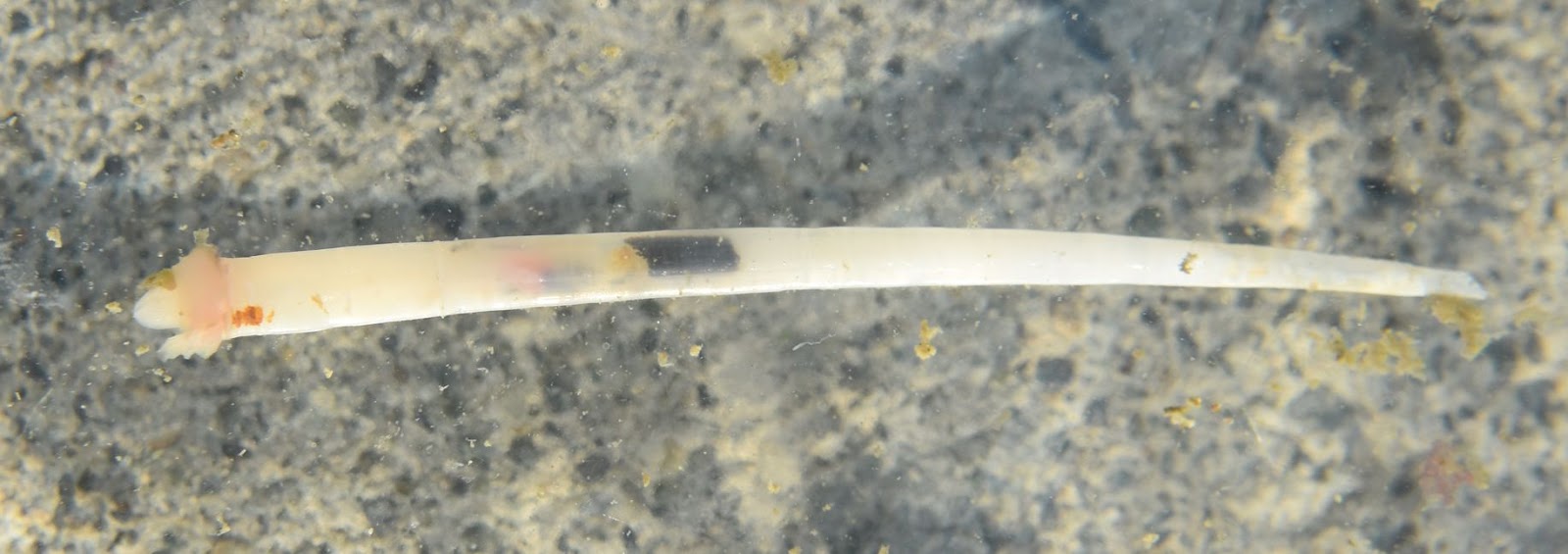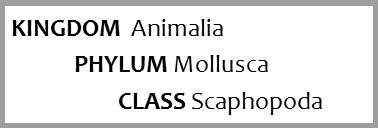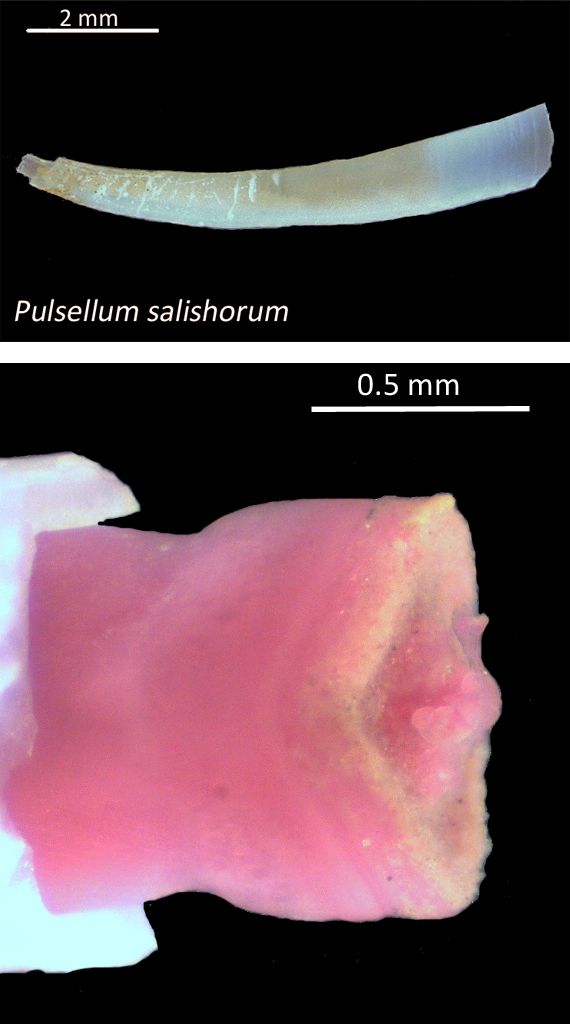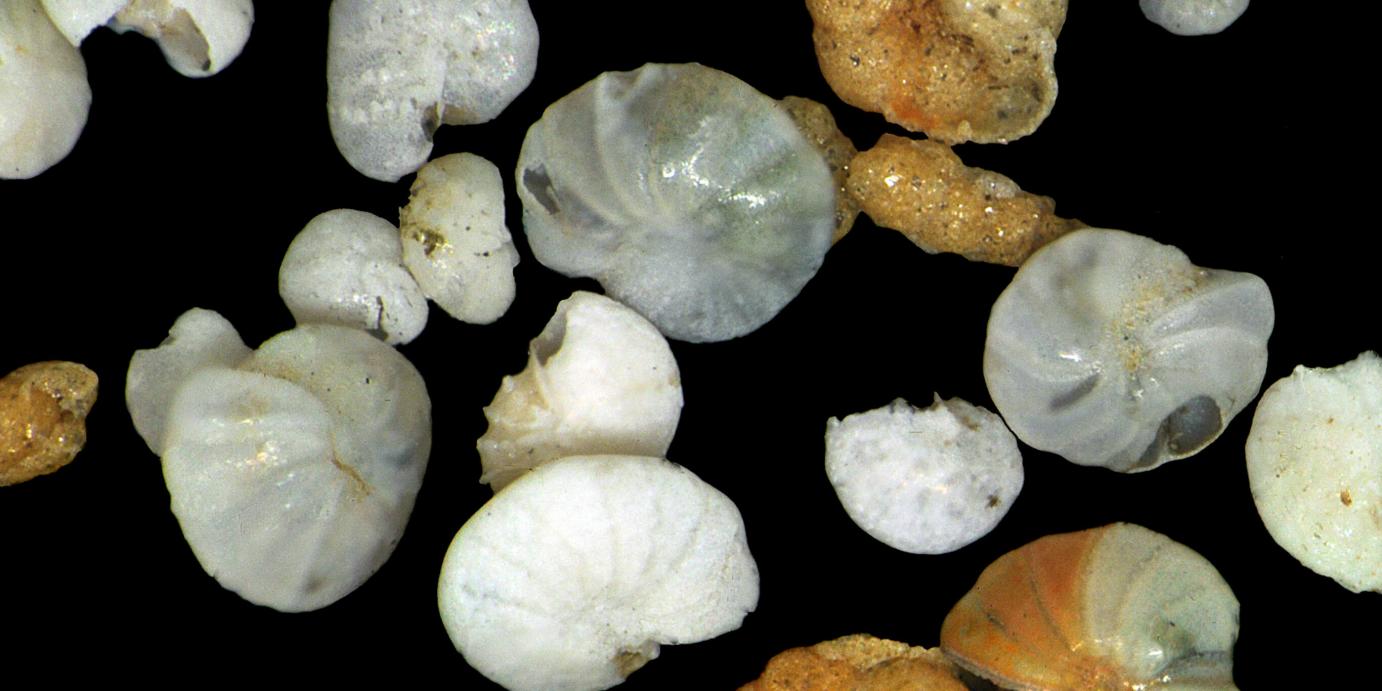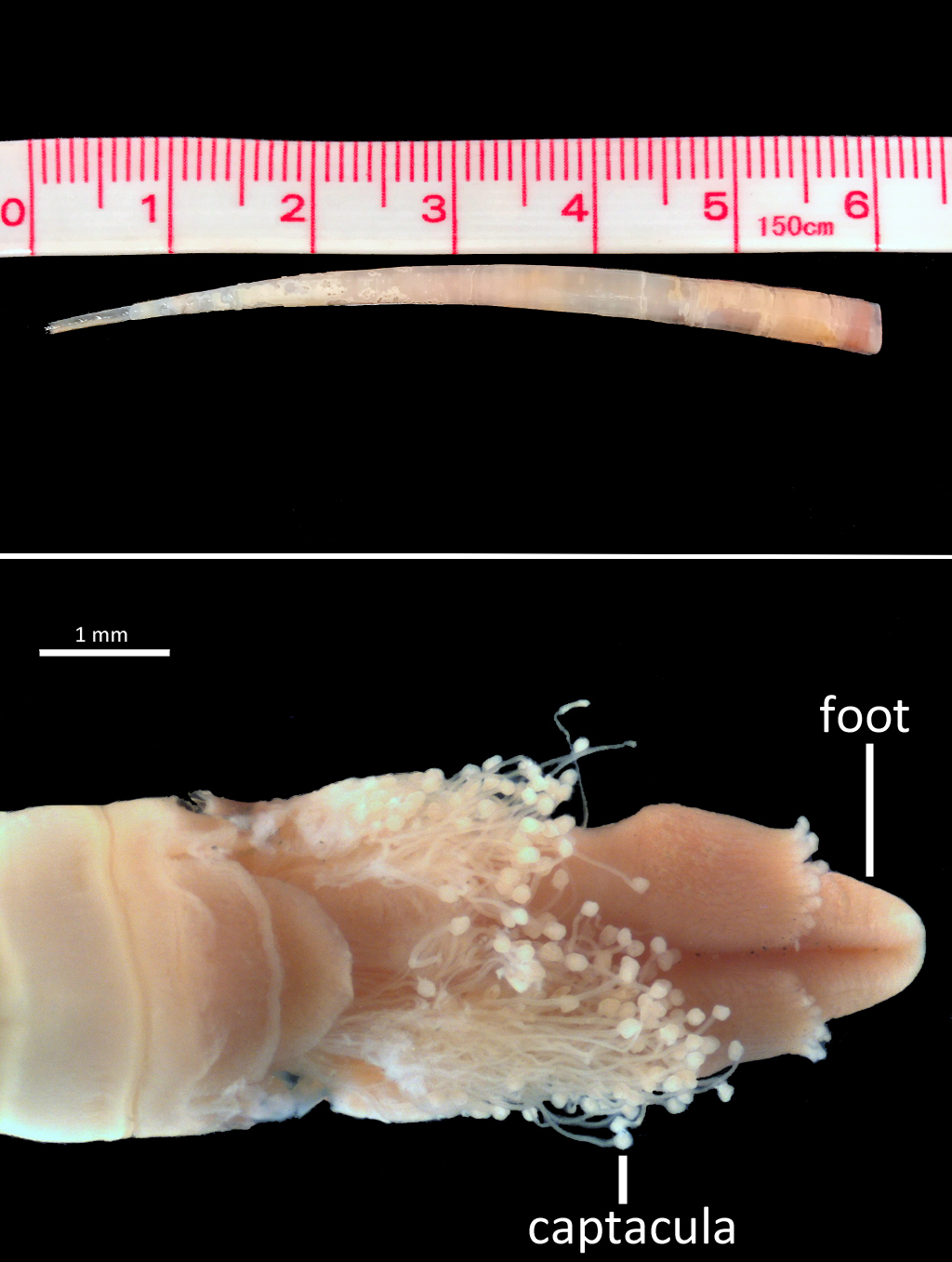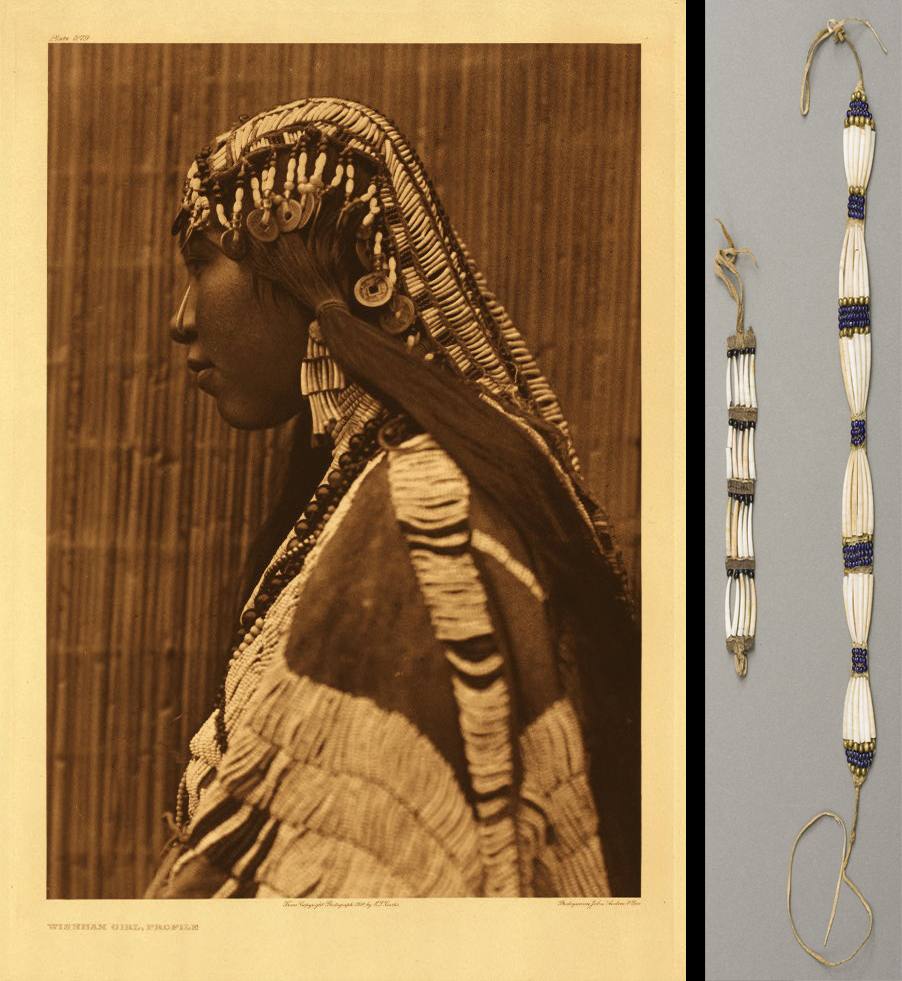Rhabdus rectius, a species of tusk shell found in Puget Sound. Photo courtesy Dave Cowles, wallawalla.edu.
Come shell or high water
Tusk shells belong to the Class Scaphopoda, meaning “boat foot,” which refers to lobes near the animal’s foot resembling a boat hull. Scaphopods are strictly marine organisms that can live at an incredible depth of up to 4,570 meters — or more than 13,000 feet deep!
While there are more than 900 species worldwide, we only encounter two species during our sediment sampling in Puget Sound. Most are collected from our northern locations in Bellingham Bay, San Juan Islands, and the Strait of Georgia.
The elephant in the room
Top: Pulsellum salishorum in its shell. Bottom: A P. salishorum head up close up with foot and captacula withdrawn. Bright pink color comes from stain used to pick animals out of sediment samples.
Head to toe
All you can eat
Scaphopods are selective deposit feeders, sifting through the sediment and picking out particular things to eat. Foraminiferans, favorite food of scaphopods, are about poppy-seed size. Photo courtesy Burke Museum.
Sticky fingers
Once scaphopods find a nice place to eat, they probe around with sticky, finger-like tentacles called captacula. Top: 6cm Rhabdus rectius in its shell. Bottom: Head end of R. rectius
Shell to pay
Occasionally you may find an empty tusk shell washed up on the beach, or see them in shell shops or sold as jewelry. These uses originated long ago, when prehistoric tribes collected scaphopod shells for decorations. Some American Indian tribes used the shells as jewelry and monetary currency. The Sioux and Kiowa tribes used scaphopod shells to decorate their armor. Left: Wishram woman wears bridal headdress, earrings, and shawl adorned with tusk shells
Critter of the Month
Our benthic taxonomists, Dany and Angela, are scientists who identify and count the benthic (sediment-dwelling) organisms in our samples as part of our Marine Sediment Monitoring Program. We track the numbers and types of species we see in order to understand the health of Puget Sound and detect changes over time.
Dany and Angela share their discoveries by bringing us a Benthic Critter of the Month. These posts will give you a peek into the life of Puget Sound’s least-known inhabitants. We’ll share details on identification, habitat, life history, and the role each critter plays in the sediment community. Can't get enough benthos? See photos from our Eyes Under Puget Sound collection on Flickr.


